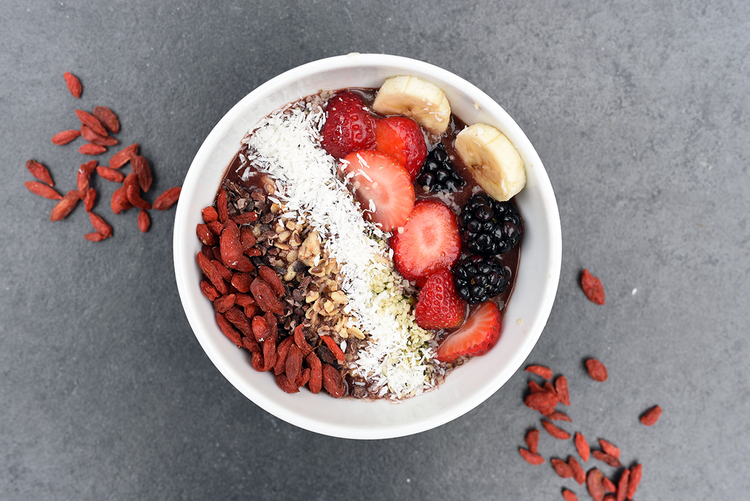Food for Thought From a Team USA Dietitian

Food is more than fuel, for Team USA athletes. Surprised? Susie Parker Simmons recently told 24Life that athletes must consider nutrients for health, energy—and more. A senior sports dietitian and physiologist at the United States Olympic Committee, her longtime focus has been winter sports, and she joined the USOC’s nutrition department in 2006. When asked about diets as competition nears, she took the conversation in directions that might surprise you, including aesthetics.
24Life: What does the diet of a Team USA athlete look like in the days before the event?
Susie Parker Simmons: I look at their sport and their lifestyle that presents with the sport. I also look at the fuel mechanisms, the athlete’s goal for the year and also the coach’s goal. Winter sports including ski jumping and figure skating are aesthetic sports [and the athletes’] looks and body composition [are factors]. Other athletes are trying to make a certain weight for a competition and that could mean reducing or gaining weight. So we will look at doing a dietary modification just prior to those few days leading into the event, to make weight [without sacrificing] strength or athletic performance.
With endurance-based sports, often what we’re trying to do is a 24-hour carbohydrate load because that’s the fuel that they may completely deplete in their event while they’re competing. We work to try to prevent that and delay the onset of fatigue during the race.
24Life: Are there any foods that are absolutely restricted for athletes?
SPS: As a dietitian, I never like having a food that’s restricted. There are certain foods that may be more appropriate in the off-season than during the season. Or there may be ones that are more restricted because the individual that has an allergy or an intolerance. So, I always try and work with athletes to say there’s no good and bad foods. They just all have an appropriate timing or appropriate quantity.
For example, because cross-country skiing involves both the upper and lower body, it has the highest energy expenditure of any sport per minute. Young, athletic females might need 4,000 calories per day in training. But because they’re not that big or tall, or they have a good amount of muscle mass but not a huge amount either, it’s hard to get that amount of calories in. When you’re 1,000 calories short, you put yourself at risk of getting sick and also affecting your hormonal status, and then it can have a negative effect on your bones. While we were learning this with the sport, [we sometimes saw] bone density in these incredibly fit young women [comparable to that] of a 65-year-old woman who’s post-menopausal.
24Life: What about once they’re on-site: Do athletes change their nutrition regimen?
SPS: Yes; we design nutrition for pre-competition or pre-training, competition and then recovery. The athletes do often change their diet for competition day just because they’re experiencing nerves, for one thing, and also because they want to feel fairly light and agile. And competition may be in different parts of the world where they can’t get what they naturally would, say, if they’re training [at home]. So I work with the athletes a lot on that and trialing it just to make sure.
When it comes to competition, you have to look at the sport. If you’re a ski jumper, it’s one powerful movement, so you’re not going to lose your carbohydrate stores. But if you’re a cross-country skier, you are at risk of that. Nutrition can delay the onset of fatigue. Also, if an athlete is competing more than once on a day, or in a series of days, food can play a psychological role as well. For example, if I was working with a team sport like ice hockey, and the team lost one of its games but was going to play again the next day, it is very difficult to make them eat the recovery food they need because they’re pretty upset they lost.
Sometimes, I have to have certain foods that will rehydrate them and will restock their stores of carbohydrates and protein, but I’m also concerned about what I would call psychological food. We’re trying to get physiological gains but also probably to upcycle psychology.
24Life: Any food for thought for everyday athletes?
SPS: There’s no good or bad food. Where people often have a little bit of difficulty is just when the emotion associated with food takes over.
Photo credit: Sambazon, Unsplash